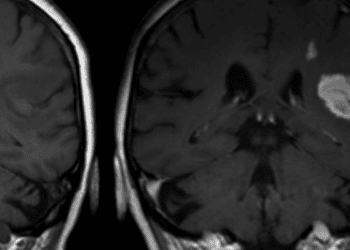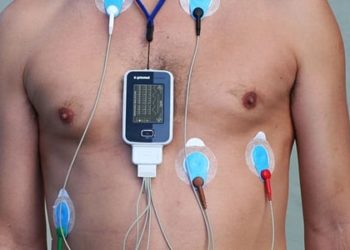[Physician Comment] Dr. Jahan Fahimi M.D., M.P.H., talks about the issue of CT scan usage in children and suggests useful guidelines for practitioners
We previously wrote about an interesting study, published in the October issue of Pediatrics, that assessed the issue of CT scan usage in children with abdominal pain. See the 2 Minute Medicine report here.
Here, we present a brief refresher of the report and the study author, Dr. Jahan Fahimi M.D., M.P.H., chimes in with his views of the issue.
The 2MM refresher:
Since it was first introduced in to medical practice in the 1970’s, Computed Tomography (CT) has seen a dramatic rise in use. Valued for its increased spatial resolution and ease of use, more than 70 million CT scans are now performed annually. However along with its rising popularity has been growing concerns regarding the radiation exposure imparted by CT scans. Diagnostic CT scans provide 1-10 milliSieverts (mSv) of radiation, an exposure is equivalent in dose to 50 chest radiographs (CXR), with the greatest radiation imparted by abdominal CT. Thus, while CT only represents 5% of all x-ray imaging, radiation from CT examinations account for 40-60% of all medical radiation. It has been estimated that as much as 1.5 – 2% of all cancers in the U.S. may be attributable to CT use.
In an effort to better understand the trend in CT use among pediatric patients presenting with abdominal pain and its effect on diagnosis and disposition, J. Fahimi and colleagues conducted a large scale cross sectional study using data from the National Hospital Ambulatory Medical Care Survey (NHAMCS). The authors found not only a dramatic rise in the utilization CT in the pediatric population, but an unequal distribution of use among differing demographics and a dearth of evidence to suggest that this increased imaging has any positive effect on patient outcomes.
Study author, Dr. Jahan Fahimi M.D., M.P.H. talks to 2 Minute Medicine. Department of Emergency Medicine, Alameda County Medical Center–Highland Hospital, Oakland, CA, USA*
 Why should physicians care? “The risks of missing a serious diagnosis when faced with a child who has abdominal pain are immediately tangible to the providers, not to mention the fear of litigation, so the barrier to getting a CT scan is often low. The risks are usually remote and delayed. As CT scans have become more routinely available in US Emergency Departments, we have been using them more. The increased reliance on CT may be a change in the standard of care, more availability to this new technology, expectations from consultants or parents, pressure to move faster and be more precise, or other forces. Meanwhile, the benefit of more CT use is not immediately clear. Are we really taking so much better care of children to justify the increased CT use?
Why should physicians care? “The risks of missing a serious diagnosis when faced with a child who has abdominal pain are immediately tangible to the providers, not to mention the fear of litigation, so the barrier to getting a CT scan is often low. The risks are usually remote and delayed. As CT scans have become more routinely available in US Emergency Departments, we have been using them more. The increased reliance on CT may be a change in the standard of care, more availability to this new technology, expectations from consultants or parents, pressure to move faster and be more precise, or other forces. Meanwhile, the benefit of more CT use is not immediately clear. Are we really taking so much better care of children to justify the increased CT use?
Why should medical students care? We are already seeing a plateau in the prevalence of CT use, and medical students should care about this topic because the pendulum may eventually swing away from liberal CT use, and focus will be on other modalities such as ultrasound or clinical decision rules to identify who really needs a CT. Before ordering CT, the provider should really ask:
- Is this test necessary?
- What is the likelihood of real pathology that might be missed without it?
- Is there an alternative test that would be available?
- Will my management change with the results of the CT?
- Can observation of the patient be used instead of a CT to rule out pathology?
With all this in mind, remember that CT is a very powerful diagnostic tool and has tremendous utility. When there is a clear indication, the patient or complaint is high-risk, or other diagnostic approaches have been exhausted, providers should not hesitate to use CT if further workup is warranted.”
*Other authors include: Andrew Herring, MD; Aaron Harries, MD; Ralph Gonzales, MD, MSPH; and Harrison Alter, MD, MS
By [MK]
© 2012 2minutemedicine.com. All rights reserved. No works may be reproduced without written consent from 2minutemedicine.com. DISCLAIMER: Posts are not medical advice and are not intended as such. Please see a healthcare professional if you seek medical advice.




